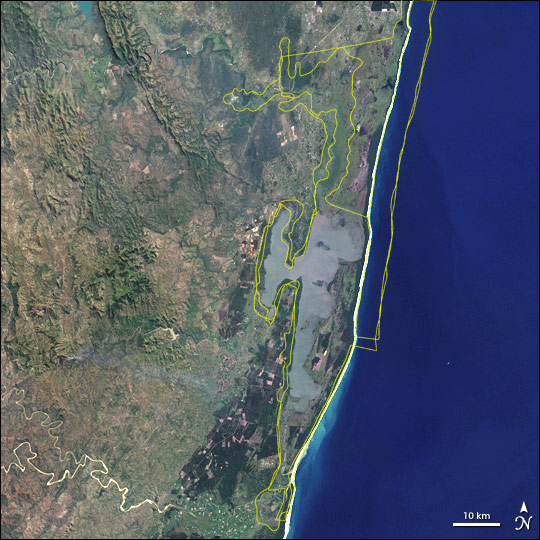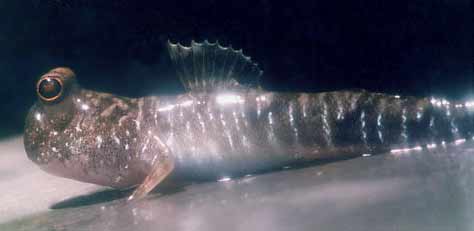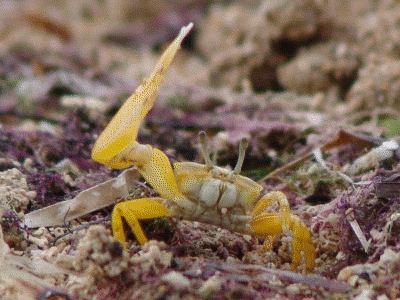|
Southern Africa Mangroves
The Southern Africa mangroves are mangrove ecoregion on the Mozambique's southernmost coast and the eastern coast of South Africa. Location and description These mangroves grow in the mouths of rivers on the Indian Ocean coast of South Africa, where the sea is warmed by the Agulhas Current, in many cases they are further sheltered from the ocean by sandbanks. The largest areas are in the estuaries of the Mhlathuze River and Lake St. Lucia. Mangroves extend as far south as the Nahoon River at 32°56′S., the most southerly occurrence of mangroves in Africa. Mangroves mostly grow in the estuaries of perennial rivers. There are approximately 1921 hectares of mangrove remaining on South Africa's coast. The largest mangrove areas are at Mhlathuze (652.1 ha), Lake St. Lucia (571 ha), Richards Bay (267 ha), Mngazana (118 ha), Mlalazi (60.7 ha), and Kosi Bay (60.7 ha), along with about a dozen smaller sites. Flora The ecoregion is home to six mangrove species: ''Avicennia marina, Bru ... [...More Info...] [...Related Items...] OR: [Wikipedia] [Google] [Baidu] |
ISimangaliso Wetland Park
iSimangaliso Wetland Park (previously known as the Greater St. Lucia Wetland Park) is situated on the east coast of KwaZulu-Natal, South Africa, about 235 kilometres north of Durban by road. It is South Africa's third-largest protected area, spanning 280 km of coastline, from the Mozambican border in the north to Mapelane south of the Lake St. Lucia estuary, and made up of around 3,280 km2 of natural ecosystems, managed by the iSimangaliso Authority. The park includes: * Lake St. Lucia * St. Lucia Game Reserve * False Bay Park * Kosi Bay * Lake Eteza Nature Reserve * Lake Sibhayi * St. Lucia Marine Reserve * St. Lucia Marine Sanctuary * Sodwana Bay National Park * Mapelane Nature Reserve * Maputaland Marine Protected Area * Cape Vidal * Ozabeni * Mfabeni * Tewate Wilderness Area * Mkuze Game Reserve The park was previously known as the Greater St. Lucia Wetland Park, but was renamed effective 1 November 2007. The word ''isimangaliso'' me ... [...More Info...] [...Related Items...] OR: [Wikipedia] [Google] [Baidu] |
Lumnitzera Racemosa
''Lumnitzera racemosa'', commonly known as the white-flowered black mangrove, is a species of mangrove in the family Combretaceae. It is found on the eastern coast of Africa and other places in the western Indo-Pacific region. It has one accepted variety from the noniminate species, ''Lumnitzera racemosa'' var. ''lutea'' (Gaudich.) Exell. Description ''Lumnitzera racemosa'' is a small to medium-sized evergreen tree, growing to a maximum height of . It develops pneumatophores and often has stilt roots. The leaves are arranged spirally at the tips of the shoots; they are simple and obovate, with slightly toothed margins. The inflorescences grow in short spikes in the axils of the leaves or at the tips of the shoots. The flowers are small and white, and are followed by woody, flattened fruits containing a single seed. Distribution and habitat This species is native from KwaZulu-Natal to southeast Kenya in the western Indian Ocean, tropical & subtropical Asia to the western Pacifi ... [...More Info...] [...Related Items...] OR: [Wikipedia] [Google] [Baidu] |
Lesser Flamingo
The lesser flamingo (''Phoeniconaias minor'') is a species of flamingo occurring in sub-Saharan Africa and western India. Birds are occasionally reported from further north, but these are generally considered Vagrancy (biology), vagrants. Characteristics The lesser flamingo is the smallest species of flamingo, though it is a tall and large bird by most standards. The species can weigh from . The standing height is around . The total length (from beak to tail) and wingspan are in the same range of measurements, from . Most of the plumage is pinkish white. The clearest difference between this species and the greater flamingo, the only other Old World species of flamingo, is the much more extensive black on the bill. Size is less helpful unless the species are together, since the sexes of each species also differ in height. The extinct species ''Phoeniconaias proeses'' in the same genus, from the Pliocene of Australia, is thought to have been even smaller. The lesser flamingo may ... [...More Info...] [...Related Items...] OR: [Wikipedia] [Google] [Baidu] |
Mangrove Kingfisher
The mangrove kingfisher (''Halcyon senegaloides'') is a kingfisher in the genus ''Halcyon (genus), Halcyon''. It is similar in appearance to the woodland kingfisher. It is found along the eastern coastline of Sub-Saharan Africa, living in woodland, along rivers, and in estuaries and mangrove. The International Union for Conservation of Nature (IUCN) has assessed it as being of least concern. Taxonomy This species was described by Andrew Smith (zoologist), Andrew Smith in 1834, using a specimen collected around Port Natal (now Durban). It is a close relative of the woodland kingfisher (''Halcyon senegalensis''). The mangrove kingfisher is a monotypic species. Northern populations are sometimes separated as subspecies ''ranivorus'', but the differences do not appear to be large enough. Description The mangrove kingfisher is about long. The male and female are alike. The head is dark grey-brown, with black lore (anatomy), lores and a narrow white line above the eye, and the cheek ... [...More Info...] [...Related Items...] OR: [Wikipedia] [Google] [Baidu] |
Endemism
Endemism is the state of a species being found in a single defined geographic location, such as an island, state, nation, country or other defined zone; organisms that are indigenous to a place are not endemic to it if they are also found elsewhere. For example, the Cape sugarbird is found exclusively in southwestern South Africa and is therefore said to be ''endemic'' to that particular part of the world. An endemic species can be also be referred to as an ''endemism'' or in scientific literature as an ''endemite''. For example '' Cytisus aeolicus'' is an endemite of the Italian flora. '' Adzharia renschi'' was once believed to be an endemite of the Caucasus, but it was later discovered to be a non-indigenous species from South America belonging to a different genus. The extreme opposite of an endemic species is one with a cosmopolitan distribution, having a global or widespread range. A rare alternative term for a species that is endemic is "precinctive", which applies to ... [...More Info...] [...Related Items...] OR: [Wikipedia] [Google] [Baidu] |
Mudskipper
Mudskippers are any of the 23 extant species of amphibious fish from the subfamily Oxudercinae of the goby family Oxudercidae. They are known for their unusual body shapes, preferences for semiaquatic habitats, limited terrestrial locomotion and jumping, and the ability to survive prolonged periods of time both in and out of water. Mudskippers can grow up to long, and most are a brownish green colour that range anywhere from dark to light. During mating seasons, the males will also develop brightly coloured spots in order to attract females, which can be red, green or blue. Unlike other fish, the mudskipper's eyes protrude from the top of its flat head. Their most noticeable feature however is their side pectoral fins that are located more forward and under their elongated body. These fins are jointed and function similarly to limbs, which allow the mudskipper to crawl from place to place. Although having the typical body form of any other gobiid fish, these front fins allow the ... [...More Info...] [...Related Items...] OR: [Wikipedia] [Google] [Baidu] |
Scylla Serrata
''Scylla serrata'' (often called mud crab or mangrove crab, although both terms are highly ambiguous, and black crab) is an ecologically important species of crab found in the estuaries and mangroves of Africa, Australasia, and Asia. In their most common forms, their shell colours vary from a deep, mottled green to very dark brown. Distribution The natural range of ''S. serrata'' is in the Indo-Pacific. It is found from South Africa, around the coast of the Indian Ocean, where it is especially abundant in Sri Lanka, to the Southeast Asian Archipelago, as well as from southern Japan to south-eastern Australia, northern New Zealand, And as far east as Fiji and Samoa. The species has also been introduced to Hawaii and Florida. In Hawaii, mud crabs are colloquially known as Samoan crabs, as they were originally imported from American Samoa. As these crabs are known for their robust size and dense meat content, they have been greatly sought after over the years. As a result of o ... [...More Info...] [...Related Items...] OR: [Wikipedia] [Google] [Baidu] |
Fiddler Crab
The fiddler crab or calling crab may be any of more than one hundred species of semiterrestrial marine crabs in the family Ocypodidae, well known for their sexual dimorphism, sexually dimorphic claws; the males' major claw is much larger than the minor claw, while the females' claws are both the same size. A smaller number of ghost crab and mangrove crab species are also found in the family Ocypodidae. This entire group is composed of small crabs, the largest being slightly over two inches (5 cm) across. Fiddler crabs are found along sea beaches and brackish intertidal mud flats, lagoons, swamps, and various other types of brackish or salt-water wetlands. Like all crabs, fiddler crabs molting, shed their shells as they grow. If they have lost legs or claws during their present growth cycle, a new one will be present when they molt. If the large fiddle claw is lost, males will develop one on the same side after their next molt. Newly molted crabs are very vulnerable because o ... [...More Info...] [...Related Items...] OR: [Wikipedia] [Google] [Baidu] |
Crocodile
Crocodiles (family (biology), family Crocodylidae) or true crocodiles are large semiaquatic reptiles that live throughout the tropics in Africa, Asia, the Americas and Australia. The term crocodile is sometimes used even more loosely to include all extant taxon, extant members of the order (biology), order Crocodilia, which includes the alligators and caimans (family Alligatoridae), the gharial and false gharial (family Gavialidae) among other extinct taxa. Although they appear similar, crocodiles, alligators and the gharial belong to separate biological family (biology), families. The gharial, with its narrow snout, is easier to distinguish, while Morphology (biology), morphological differences are more difficult to spot in crocodiles and alligators. The most obvious external differences are visible in the head, with crocodiles having narrower and longer heads, with a more V-shaped than a U-shaped snout compared to alligators and caimans. Another obvious trait is that the upp ... [...More Info...] [...Related Items...] OR: [Wikipedia] [Google] [Baidu] |
Thalassodendron Ciliatum
''Thalassodendron ciliatum'', the sickle-leaved cymodocea, is a species of plant in the ''Thalassodendron'' genus of seagrasses in the family Cymodoceaceae. Distribution ''Thalassodendron ciliatum'' has a wide distribution throughout the Indo-Pacific region, but has variable abundances throughout its range. This seagrass has been recorded from the western Philippines to Borneo and Singapore, Indonesia, Papua New Guinea, the Caroline Islands, Vanuatu, Australia, India and the Maldives. It is also common from the Gulf of Oman to the Red Sea down to South Africa, Madagascar, the Seychelles, the Comores, the Mascarenes and parts of Malesia and the Solomon Islands.seagrassrecovery.com date of access Wednesday, December 11, 2013 Short, F.T., Coles, R., Waycott, M., Bujang, J.S., Fortes, M., Prathep, A ... [...More Info...] [...Related Items...] OR: [Wikipedia] [Google] [Baidu] |
Zostera
''Zostera'' is a small genus of widely distributed seagrasses, commonly called marine eelgrass, or simply seagrass or eelgrass, and also known as seaweed by some fishermen and recreational boaters including yachtsmen. The genus ''Zostera'' contains 15 species. Ecology ''Zostera marina'' is found on sandy substrates or in estuaries, usually submerged or partially floating. Most ''Zostera'' are perennial. They have long, bright green, ribbon-like leaves, the width of which are about . Short stems grow up from extensive, white branching rhizomes. The flowers are enclosed in the sheaths of the leaf bases; the fruits are bladdery and can float. ''Zostera'' beds are important for sediment deposition, substrate stabilization, as substrate for epiphytic algae and micro-invertebrates, and as nursery grounds for many species of economically important fish and shellfish. ''Zostera'' often forms beds in bay mud in the estuarine setting. It is an important food for brant geese and wigeon ... [...More Info...] [...Related Items...] OR: [Wikipedia] [Google] [Baidu] |
Ruppia
''Ruppia'', also known as the widgeonweeds, ditch grasses or widgeon grass, is the only extant genus in the family Ruppiaceae, with eight known species. These are aquatic plants widespread over much of the world. The genus name honours Heinrich Bernhard Rupp, a German botanist (1688-1719). They are widespread outside of frigid zones and the tropics. Description The leaf is simple and not rhizomatous. They can be annual (commonly) or perennial (rarely); stem growth is conspicuously sympodial, but sometimes is not. These species are adapted to be in brackish water (and salt marshes). The leaves are small or medium-sized. Their disposition can be alternate, opposite, or whorled (usually alternate except when subtending an inflorescence). Even, lamina keep entire and are setaceous or linear. The leaf just shows one vein without cross-venules. Stomata are not present. The mesophyll leaks calcium oxalate crystals. The minor leaf veins do not present phloem transfer cells and leaks ves ... [...More Info...] [...Related Items...] OR: [Wikipedia] [Google] [Baidu] |

.jpg)



.jpg)